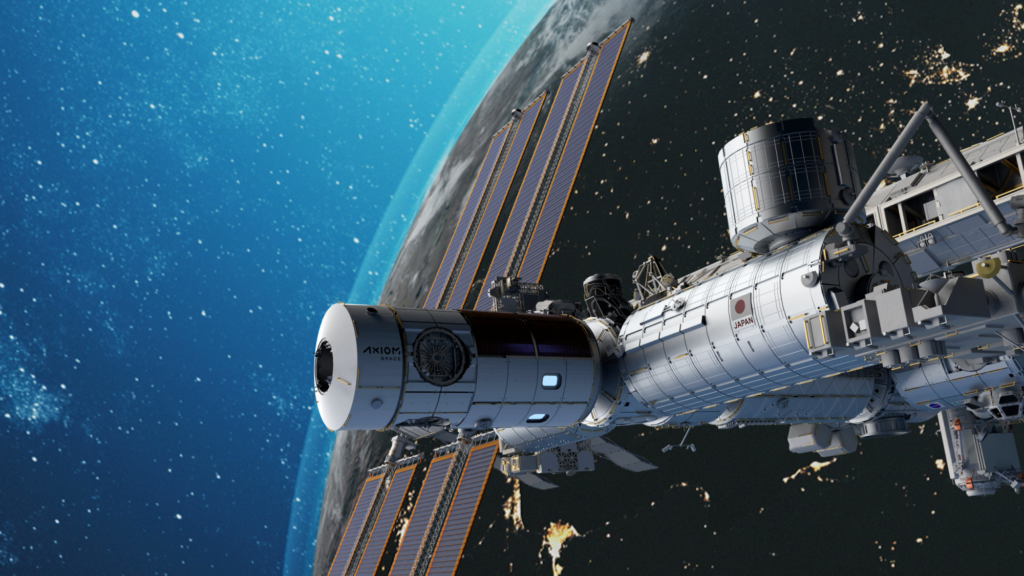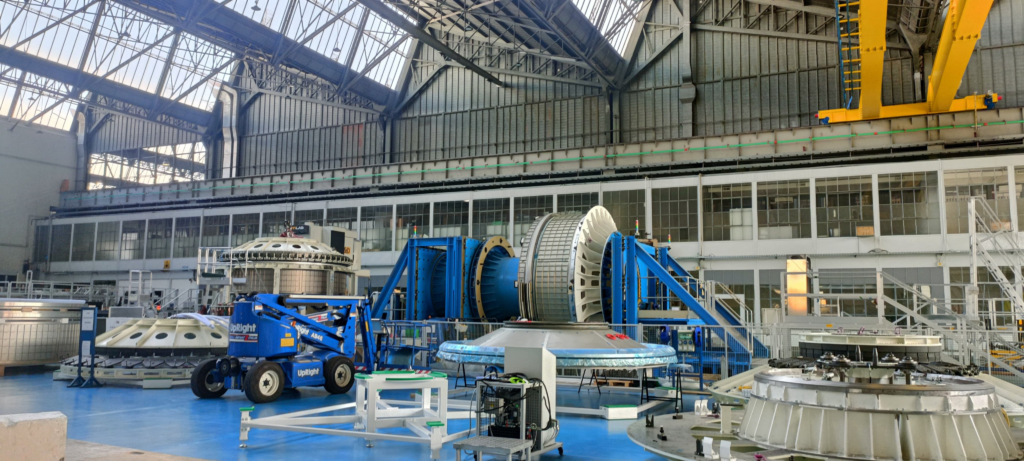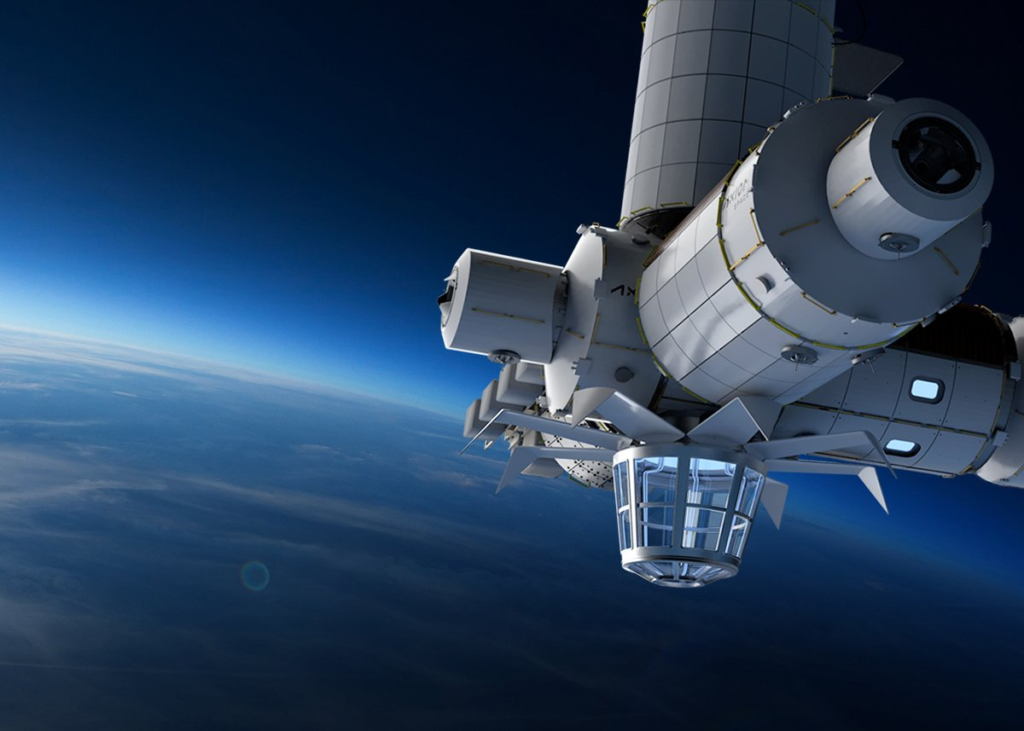
The First Commercial Space Station Segment Is Nearing Completion
Axiom Space is not far away from the launch of its first module that will attach to the International Space Station. Named Hab One, the module is nearing physical completion and will begin a long phase of testing before it’s approved to support humans. If it stays on schedule, this would mark the start of the first commercial space station.
The plan involves sending one module at a time over the course of around 5 years until the station is large and most importantly can support itself. At that point, the ISS should also be nearing retirement, so the commercial station will detach and become its own entity. However, in order to consistently launch these modules in the future, Axiom has begun working on them now.
Recently we have seen somewhat of a ramp-up in progress as the company pushes toward the completion of the first module. Here I will go more in-depth into the current station progress, the future station roadmap, unique design features, and more.
Physical Progress

The first Axiom module was originally planned to launch in 2024, although, it ended up being pushed back. Last year, the chief government and external relations officer at Axiom Space, said the company now plans to launch its first commercial module to be installed on the ISS in 2025. The company just “rebaselined” that schedule as it goes through a critical design review of the module. A second module, a clone of the first, would follow in six to eight months” she said.
In the time since this comment, Axiom has made a lot of progress. A recent video update provided by the company showcases the Hab One structure and main components within the Thales Alenia Space manufacturing facility. This company was contracted by Axiom to build at least the first two modules. The video showcases the gates of the module and the core segments. By now they are fully machined and the main structures are complete. Even the most complex piece, the module that features four ports on every side, is almost done.
They were quoted saying, “Our partner Thales Alenia in Italy is in the finishing stages of building the first module, the first pressure vessel.” Besides the main structures themselves, the station also intends to use a lot of windows. These widows, however, are quite complex and need to be integrated properly. Last month in August, the company tweeted saying, “The qualification model of the windows for the @Axiom_Space Station is now integrated and ready to be tested. Exact replica of the ones that will equip the Axiom Habs, once in orbit, they will safely face Earth offering a wide landscape of our blue planet.” This included a few images of the windows being worked on.
In addition, even more recently on September 8th, they tweeted highlighting, “Activities on the Axiom Space HabOne are progressing quickly, with vibrations tests on window components happening in @Thales_Alenia_S in #Rome, new structural elements welded in our facilities in #Turin and bulkheads for #HabTwo already being forged through our supply chain.” This is a good sign as not only are they testing the physical components but are already making good progress on the second module. Hab Two is expected to launch in 2026, not long after Hab One. They will then connect and double the station’s size.
Other important components such as the hatch have been undergoing development and manufacturing as well. The Axiom Station module hatches will allow crews to access current and future station elements and visiting vehicles. A development unit validates the design’s ability to seal under a predetermined input force. The station also needs a way to move itself around in space. Axiom modules are each individual spacecraft equipped with systems need to maneuver in orbit, including propulsion thrusters developed in-house. Axiom has been working on a test unit that continues to cycle through new and progressively longer hot-fire cycles to refine the design.
To add to this, eight of the largest windows ever constructed for the space environment will encircle the Axiom Earth Observatory cupola, allowing Axiom Station’s entire crew to overlook the Earth in 360-degree freedom from orbit. As partially mentioned prior, when it comes to windows, you have to be very careful and make sure they are strong. The company’s test unit continues to undergo increasingly extensive vacuum seal and stress testing to confirm the design meets all leak rate, outgassing, and material deformation requirements.
Lastly, the company was quoted saying, “new technologies have avionics on pace to be Axiom Station’s first flight-ready system and embodies the expert touch that characterizes its next-generation design. Deep into their development, this test bed is used to test, debug, and validate its code” they said.
Axiom’s Plan

Once the ISS is retired, NASA knows it will still need access to LEO. For this reason among others they are helping fund and facilitate different commercial projects including Axiom Station. This being said Axiom is the only company with the unique opportunity to attach to the ISS. A process they plan to take advantage of.
While dates have changed quite a bit overtime and will likely continue to, Axiom has set up a roadmap of station segment launches and completion dates. Hab One is the first module which contains living quarters for four crew members and volume to accommodate research and manufacturing applications. Axiom describes it as the nucleus of future human activity in Earth’s orbit. Each personal crew quarter is equipped with a large Earth-viewing window and touch-screen comms panel. A docking adapter allows visiting vehicles to dock to the Axiom Station. Four radial ports on the hub provide for the addition of future modules and increase the station’s docking capability. As the initial module, this feature is especially important. It will have propulsion, guidance, navigation, and station control systems. The first windowed pressurized module is approximately 11 meters long and 4.2 meters in diameter at the widest part.
Next is Axiom’s Hab Two module which is expected to launch in 2026. It will provide quarters for an additional four crew members allowing the station to support up to eight crew. It provides complete ECLSS support, commercial high-data satellite communications, and a Canadarm 3-styled Remote manipulator system for the Axiom Station. Axiom offers twice the research volume and features a total of eight radial ports for the docking of visiting vehicles and the addition of further modules. In a lot of ways, this second module is very similar to the first.
Next, you have Axiom’s Research & Manufacturing Facility module, expected to launch no earlier than 2026. It provides access to the unique microgravity environment as a platform to conduct innovative research, product development, process improvement, and manufacturing. The module will launch and arrive at the station with an extension on the end. This extension will be detached from the lab module and moved toward the bottom of Axiom Hab Two. This will be a viewing room with some of the largest windows ever sent into space.
Finally, you have Axiom’s Power Thermal module, which will provide power and thermal capacity equivalent to that of the ISS via solar array to support the station so that Axiom Station will be able to support itself once it disconnects from the ISS. It is expected to launch no earlier than 2027. Specifically, the power module attaches to the zenith port of the Hub, with its solar array producing comparable amounts of power to the ISS. It expands on Axiom Station’s environmental control and life support capabilities, adds additional storage and payload capability, and provides an airlock to be utilized for EVAs by astronauts on board. It’s important to point out however that until AxPT is launched, Axiom Station will be relying on the ISS to help provide power.
In a statement highlighting attaching to the ISS, Axiom says, “This partnership and strategic connection allows Axiom Space to effectively adopt and service the multinational user base of the ISS National Laboratory to seamlessly continue research and manufacturing initiatives. Axiom Station will host people, research, and manufacturing that will lead development for numerous industries using techniques that are available only in microgravity. The station will also service the rapidly expanding infrastructure and solutions operating in space and provide an accessible platform for private companies and national governments to continue the research and development of breakthrough innovations.”
Even the inside of the modules is expected to be unique. Axiom teamed up with a creator who had one theme in mind when designing Axiom crew accommodations: multi-directional freedom. They believe that the egg-like structure symbolizes nest-like comfort complete with unobstructed views of our home planet — the first such place for humans to truly contemplate our place in the Cosmos. Windows along with hundreds of LED lights will line the inside of the modules and crew quarters. All of which combine to create a one-of-a-kind environment in space for anyone living there.
Conclusion
Axiom Space is continuing to make progress on the first module that will attach to the ISS. The main structure is complete and certain tests have already begun as they finish the segment. We will have to wait and see how it progresses and the impact it has on the space industry.
